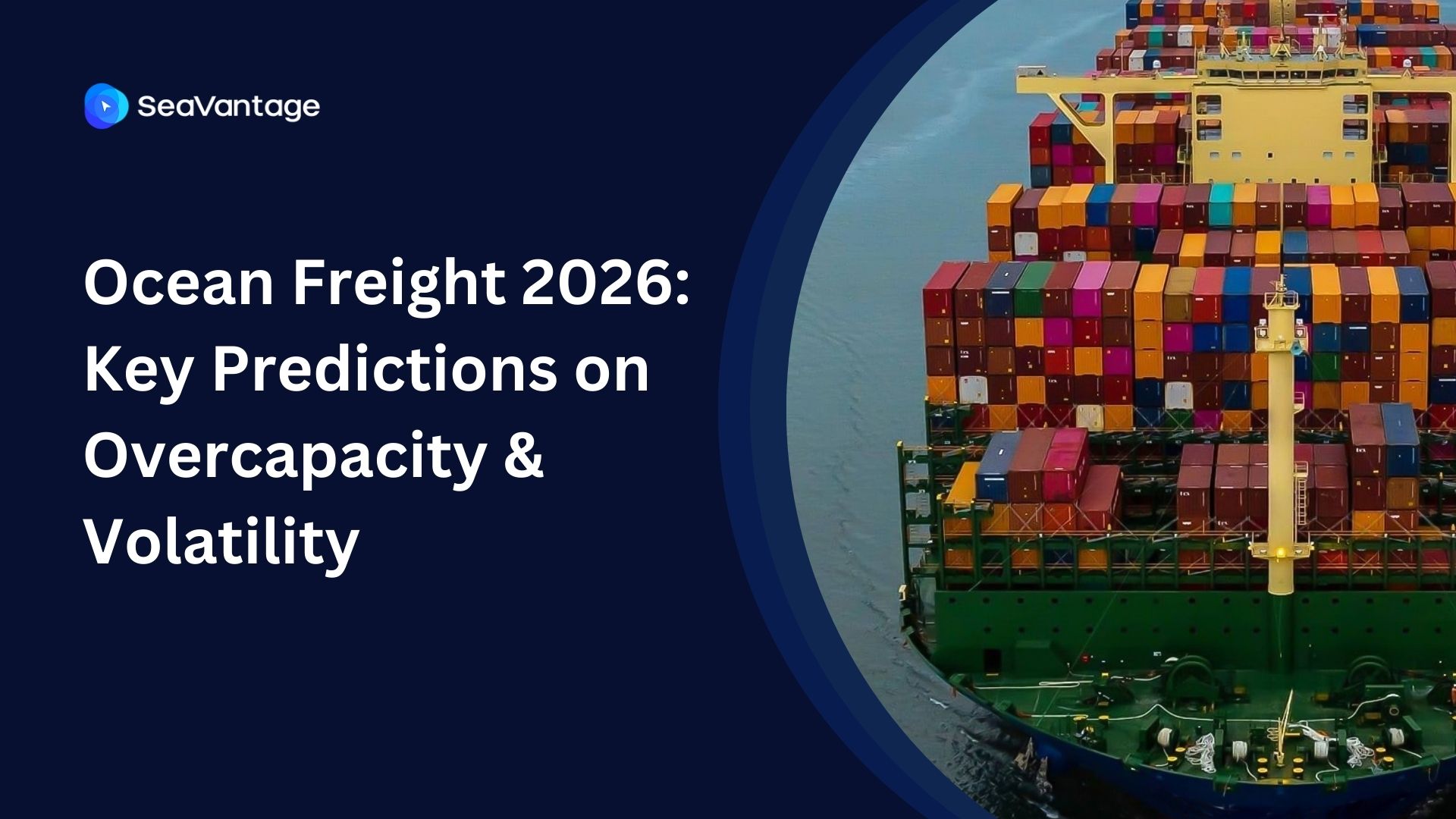How to Track Container Shipments to the Port of Newark in 2025 | Real-Time Visibility & Tools
.jpg)
Container tracking has gone from a logistical afterthought to a competitive advantage. And if you're shipping through one of the busiest ports on the U.S. East Coast—Port Newark—you know how critical it is to stay ahead of delays, demurrage, and data gaps. With technological advancements reshaping supply chain visibility, tracking a container into or out of Port Newark in 2025 is more streamlined than ever—if you know where to look.
Let’s break down how it works, what to expect, and how to get ahead of common pitfalls.
Why Port Newark Still Matters in 2025
Port Newark, part of the Port of New York and New Jersey complex, continues to rank among the top U.S. container hubs. In 2023, it processed over 7.8 million TEUs, making it the highest-volume container port in the country. Its direct rail connections (via ExpressRail), proximity to major markets, and expanded terminal capacity ensure its continued dominance well into 2025.
With global shipping volumes rebounding and digitalization in full swing, the need for granular, real-time tracking at this port has only intensified.
Port Newark's significance is amplified by the role of top global terminal operators who continue to invest in automation and intermodal capacity. As container traffic rises, the complexity of tracking increases—and so do the consequences of losing visibility.
How Container Tracking Works at PNCT
At the heart of Port Newark’s operations is the Port Newark Container Terminal (PNCT). This terminal uses a combination of digital platforms, carrier systems, and private APIs to provide tracking updates. Here's how the system generally works:
- Unique terminal identifier: PNCT is designated by terminal code F577 and is connected with the Port Authority’s centralized data.
- Milestone-based tracking: You’ll see events like “vessel discharge,” “gate in,” “gate out,” and “available for pickup.”
- Rail & intermodal data: Through ExpressRail, containers can move directly to inland hubs. This adds complexity, but also creates opportunities for integrated tracking.
For those unfamiliar with the infrastructure, this guide on how container ports and terminals work offers a helpful overview.
Step-by-Step: How to Track a Container at Port Newark
You have a few options when it comes to tracking a container:
1. Directly via the terminal
- Visit the PNCT website and use the container lookup tool.
- You’ll need a container number or booking number.
- Expect limited updates, typically from vessel discharge through gate-out.
2. Via your carrier’s tracking portal
- Most ocean carriers (e.g., Maersk, CMA CGM, Hapag-Lloyd) allow tracking via B/L or container number.
- Updates vary based on whether the carrier has integrated terminal data.
3. Using multi-source platforms
- Tools like SeaVantage combine terminal, AIS (Automatic Identification System), and carrier data.
- These platforms typically offer: Container milestones, last Free Day (LFD) alerts, delivery status and release holds, CSV or excel upload for bulk tracking
If you're looking for real-time vessel-level updates, tools like SeaVantage’s Cargo Insight can provide global ship positioning and expected arrival data at Newark terminals.
Understanding Key Tracking Events
Here's what you’ll typically see during the container lifecycle at Port Newark:
Smart tracking tools aggregate these milestones into dashboards or APIs, alerting you in real time. The clearer the data, the better your response time.
Avoiding Demurrage and Delays
Delays at Port Newark often come down to one issue: timing. Misjudging the Last Free Day, failing to arrange pickup promptly, or missing documentation requirements can cost thousands.
How to avoid this:
- Set alerts for LFD and gate-out status.
- Verify release status early with customs and carriers.
- Use predictive ETAs from tools like Seavantage to plan trucking appointments.
- Have paperwork ready in advance, especially for bonded freight or reefer containers.
A container that sits unclaimed even one day beyond the LFD can incur $150–$300/day in demurrage fees—not to mention added chassis charges and missed delivery deadlines.
Choosing the Right Tracking Method
So, which tracking setup is right for your operation?
For growing logistics teams, platforms with API access offer a scalable path forward—especially those embracing newer technologies like AI and IoT.
2025 Trends That Will Shape Your Tracking Strategy
Container tracking in 2025 isn’t just about location—it’s about intelligence. The supply chain is going smart, and here's what’s driving it:
- IoT Sensors & Smart Containers: GPS, humidity, and tamper sensors are becoming standard. Condition alerts are now pushed to your phone or control tower dashboard.
- 5G-Enabled Smart Ports: Real-time data flows from yard cranes, ships, and trucks. These networks reduce data lag and improve coordination.
- AI-Powered Control Towers: Platforms now use machine learning to predict disruptions and recommend actions. Alerts are prioritized by severity, not just time.
- Blockchain for Secure Tracking: Immutable tracking logs help with audits and dispute resolution. Useful for high-value or sensitive shipments.
- Digital Twins & Predictive Models: Virtual models of supply chain processes allow better planning. Forecast disruptions before they happen—saving time and money.
The bottom line? Tracking is no longer about “where is my container?” It’s about “what’s happening next—and what should I do about it?”
Final Thoughts: Logistics Intelligence Starts with Visibility
Port Newark isn’t slowing down—and neither should your tracking strategy.
With container volumes rising and port workflows becoming increasingly digitized, it pays to adopt smarter, more integrated tracking tools. Whether you’re managing ten containers or a thousand, real-time visibility isn't optional in 2025. It’s expected.
Looking to boost visibility and stay ahead of delays? Platforms like SeaVantage offer scalable solutions to keep your supply chain flowing smoothly.
2025년 9월, 주요 글로벌 항만에서 어떤 운송사가 가장 긴 선박 체류 시간을 기록했는지 확인해보세요. 트렌드를 비교하고, 지연을 파악하며, 전체 항만 데이터를 통해 운송 전략을 최적화할 수 있습니다.
2025년 8월, 주요 글로벌 항만에서 어떤 운송사가 가장 긴 선박 체류 시간을 기록했는지 확인해보세요. 트렌드를 비교하고, 지연을 파악하며, 전체 항만 데이터를 통해 운송 전략을 최적화할 수 있습니다.
2025년 7월, 주요 글로벌 항만에서 어떤 운송사가 가장 긴 선박 체류 시간을 기록했는지 확인해보세요. 트렌드를 비교하고, 지연을 파악하며, 전체 항만 데이터를 통해 운송 전략을 최적화할 수 있습니다.
Discover how RTTVP is a game-changer for Logistics Service Providers. Learn the 5 core benefits, from B2B customer experience to predictive operational planning.
Discover the top ocean freight predictions for 2026, from ship overcapacity to Suez Canal disruption, global sourcing shifts, and strategies for volatility.
Discover why container tracking breaks under complexity. Learn how B/L-based visibility improves ETA accuracy, boosts productivity, cuts TCO, and reduces data loss.



.svg)






.png)